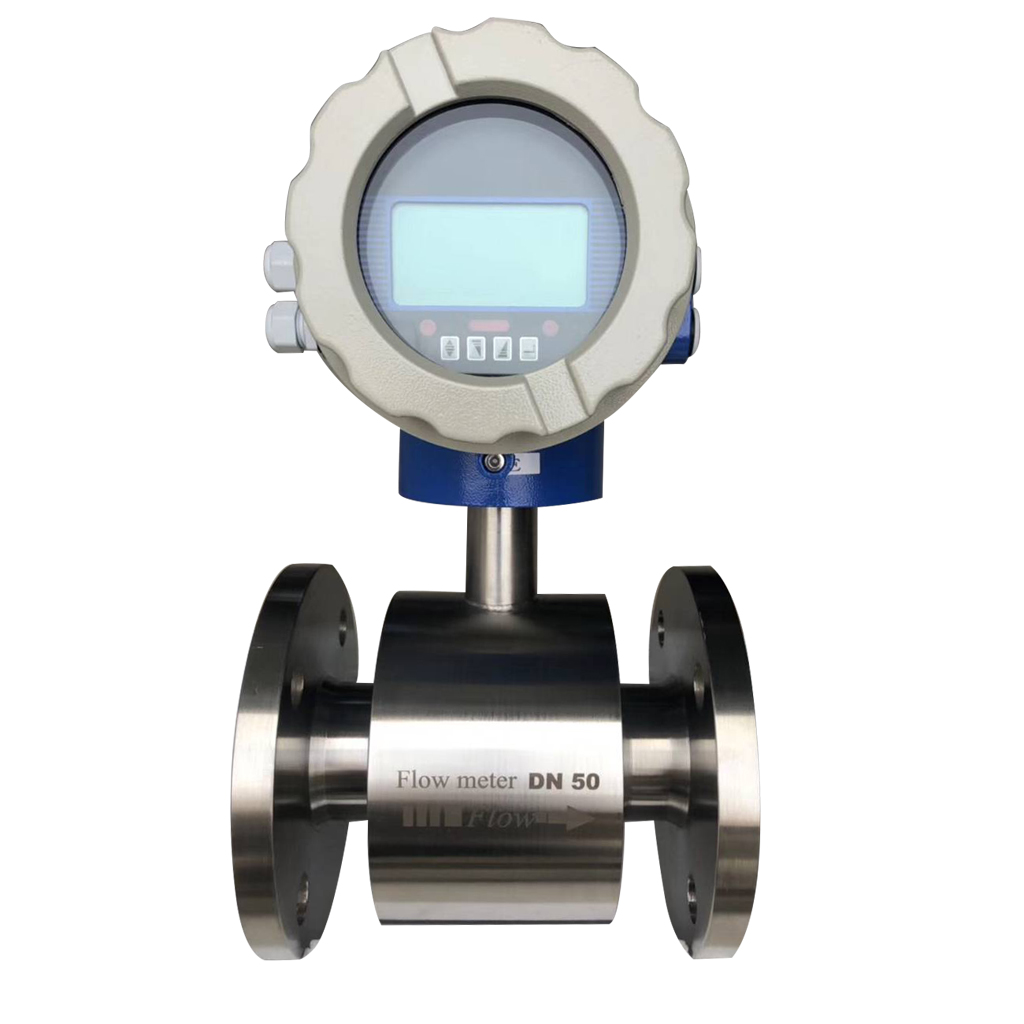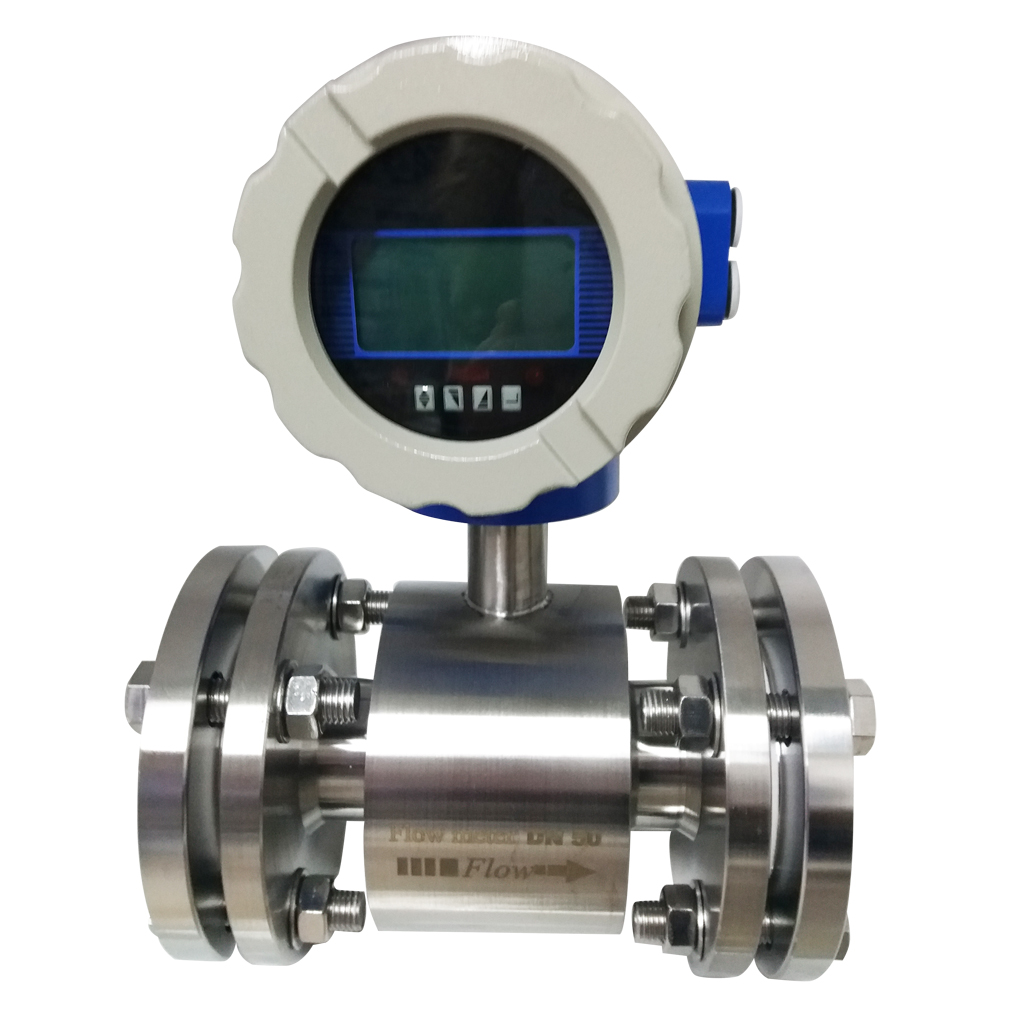Split Magnetic Flow Meter Installation Location
You must know when buying an electromagnetic flow meter
What is a conductive liquid medium?
What is the common temperature and maximum temperature of the medium?
What is the common pressure and maximum pressure of the medium?
What is the diameter of the pipe?
The minimum flow rate of the medium, the common flow rate, the maximum flow rate?
Power supply mode of the meter?
Is it with remote transmission function?

There should be a certain amount of back pressure at the installation place of the split electromagnetic flowmeter, and the direct emptying of the sensor outlet will easily cause
the liquid in the measuring tube to be not full. This is a poor installation position and should be avoided.
In order to prevent negative pressure in the sensor, the sensor should be installed behind the pump, not in front of the pump. In order to facilitate the inspection and adjustment
of the zero point when the liquid flow is stationary, the bypass pipe should be installed as much as possible for small and medium pipe diameters.
When measuring fluids containing sediment, the installation method that facilitates cleaning of the sensor should be considered. The choice of electromagnetic flowmeter should
be based on the physical and chemical properties of the measured fluid, including the diameter, flow range, lining material, electrode material, and output current of the electromagnetic flow meter,
which can be adapted to the nature and properties of the measured fluid. Flow requirements.
The fluid measuring the flow rate must be conductive. Strictly speaking, except for high-temperature fluids, any fluid with a conductivity greater than 5μ/cm should use the corresponding
electromagnetic flowmeter to measure the flow rate. Therefore, non-conductive gases, steam, and oils , Acetone and other substances can not be used to measure the flow of electromagnetic flowmeter.
The flow rate is within the range of 0.3-15m/s, at this time, the diameter of the flowmeter can be selected to be the same as the diameter of the user's pipeline.
When the flow velocity is lower than 0.3m/s, the flow velocity is increased locally at the instrument part, and the tube shrinkage method is adopted: in the case of a good on-site environment,
the integrated type is generally selected, that is, the sensor and the converter are assembled into one.
Through the above introduction, do you understand that you need to know many aspects of knowledge to use the flowmeter well. In addition to knowing the working principle of the meter,
you must also understand how to install and the piping medium that has an adverse effect on the application of the meter. These factors can be guaranteed in advance. The selection is correct.
To Application place of split electromagnetic flowmeter: Each instrument has its advantages, and we choose it to choose its advantages, so we are required to master all the relevant knowledge of the instrument.

⑴ The ambient temperature or the radiation temperature on the surface of the flowmeter converter exceeds 60oC.
⑵Occasions where pipeline vibration is large.
(3) Severely corroded the aluminum shell of the sensor.
⑷Occasions where the on-site temperature is relatively high or corrosive gas is present.
⑸The flowmeter is installed at high altitude or in the occasions where it is inconvenient to debug. I believe that through the above introduction, you must understand what places need to use suitable flow meters.
To Split magnetic flow meter installation location selection: installation is also an important environment, which will also have a great impact on the accuracy of the measurement results,
so we must treat it correctly. The installation location and flow direction of the electromagnetic flow sensor can be installed horizontally, vertically or obliquely . When installed horizontally,
the sensor electrode shaft must be placed horizontally.
This can prevent the electrode from being insulated for a short time due to air bubbles entrained by the fluid; it can also prevent the electrode from being covered by deposits in the fluid.
The sensor should not be installed at the high point of the pipeline to avoid the accumulation of air. It is a bad installation position and should be avoided.
When installed vertically, the flow direction should be upwards, so that there is no flow or the flow is very small, the heavier solid particles entrained in the fluid sink,
and the lighter fatty substances rise and leave the sensor electrode area.
When measuring liquid-solid two-phase flow such as mud and mineral slurry, the vertical installation can avoid solid phase precipitation and uneven wear of the sensor lining.
At the outlet of a downward pipeline, it is a poor installation position and should be avoided. As a user, you must install it correctly, so you need to know the relevant introduction
about the correct installation. There will be detailed instructions in the manual when the product leaves the factory.
If you want to know more parameters and quotations of electromagnetic flowmeters, please consult winny: sales01@cxflowmeter.com


